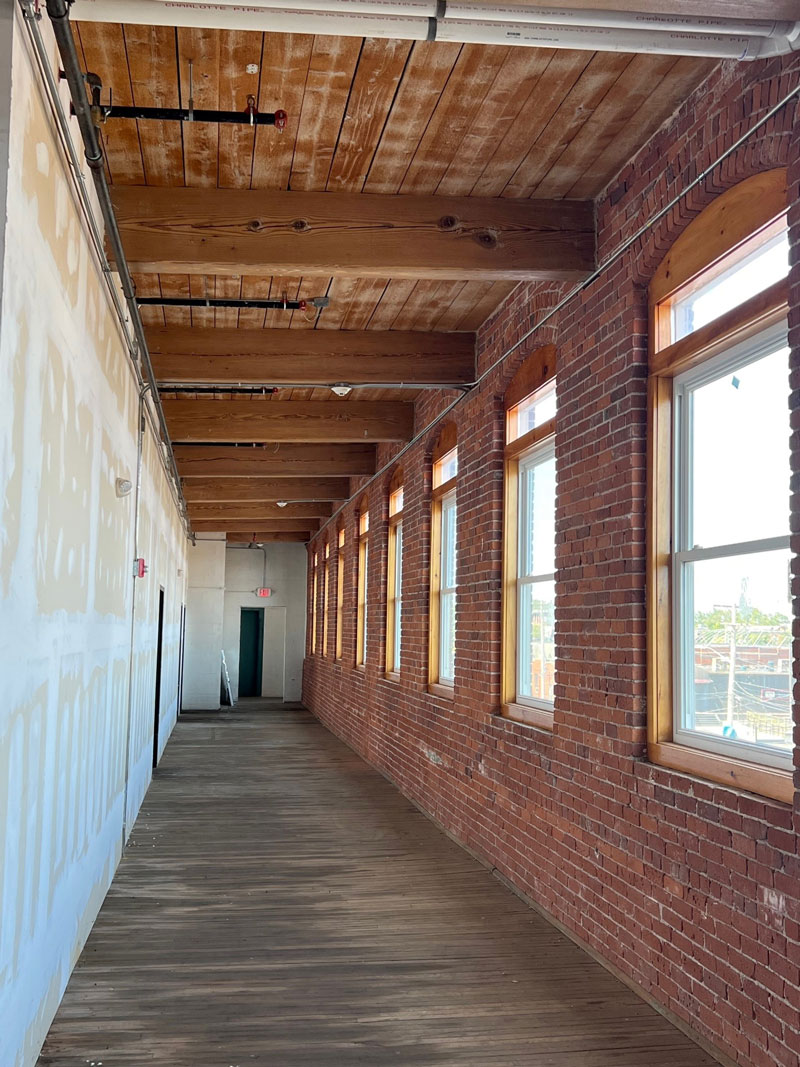History
The History of Harrison Steam
Harrison Steam, a symbol of industry and resilience, is perhaps the oldest steam powered mill still standing in New England. The original stone mill – Eagle Steam Mill No 1, as it was called – was built in 1829, when Providence was a town of approximately 17,000 people and Olneyville was beginning its transformation from rural crossroads to dynamic manufacturing center. John Waterman, an early pioneer in textile manufacturing, outfitted it with a powerful steam engine crafted by Starbuck & Elliott, that together with upwards of 135 workers, churned out cotton cloth and cotton yarn for a growing nation.
As Providence grew and Olneyville transformed, so did Harrison Steam. The mill adapted to changing tastes through multiple additions and partial demolitions that reflect a multitude of manufacturing innovations. The tall, brick boiler house and two-story eastern end of the mill, on Troy Street, were added by 1900. The four story, angled brick façade along Agnes Street was added in 1919. Harrison Steam continued be a home for textile businesses, sometimes profitable, sometimes not, through a variety of owners until 1954 when it became the home of Victory Pearl, a costume jewelry finisher. As the jewelry industry moved overseas and Victory Pearl downsized its operation, multiple tenants moved in to take up newly available space. In 2002 Victory Pearl moved out entirely and Harrison Steam became a true multi-tenant building.
Today, Olneyville is a vibrant, rapidly transforming neighborhood, shaped by its past but embracing its future. Artists, creatives, and immigrants from around the world now make it their home, infusing its streets and buildings with new energy. As Harrison Steam moves into a new phase of use, it stands as a reminder of Olneyville’s resilience and the enduring legacy of American innovation and entrepreneurship.


